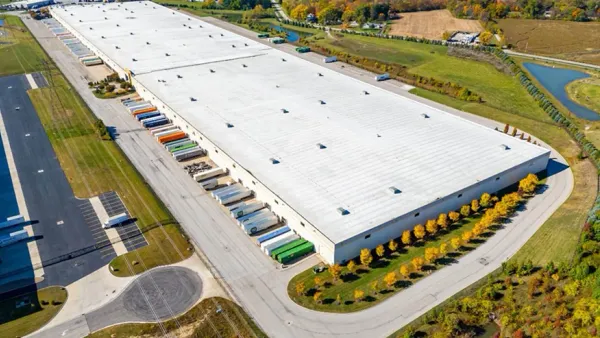This is a contributed op-ed written by Adam Mussomeli, principal and supply chain and network operations lead for Deloitte Consulting. Opinions are the author's own.
The pandemic has triggered fundamental changes that will continue to accelerate innovation. Inevitable transformations — such as workplace flexibility or the shift to online commerce channels — have been fast-tracked, as organizations are pressed to meet the challenges brought on by the “new normal.”
This is especially true for the supply chain, as leaders realize the significant value and flexibility offered by digitally enabled operations. Supply chain leaders whose operations are strained by the current environment can help boost organizational resilience by embracing the smart factory — an innovative, holistic solution that enhances supply chain capabilities through the use of artificial intelligence, the IoT and robotics.
Even before the pandemic, organizations identified the smart factory as a key competitive differentiator and began investing accordingly.
In 2019, research we conducted with the Manufacturer's Alliance for Productivity and Innovation found that 86% of U.S. manufacturers believe smart factory initiatives will be a main driver of competitiveness over the next five years.
Another study showed that, mid-pandemic, 62% of leaders are continuing smart factory investments, allocating 20% more to those initiatives than last year. And 75% of U.S. manufacturing leaders are concerned about the ongoing impact of COVID-19 and economic slowdown on operations, while 72% are concerned with meeting profitability goals.
That sentiment will remain, if not grow, as the U.S. moves through recovery and toward normalcy. These technologies are not only relevant in light of this pandemic, but they can provide benefits for years to come.
Increasing efficiency while driving down costs
Smart factory investments have immense benefits operationally, fiscally and throughout the workplace. Productivity and efficiency, for example, have risen to the forefront and increasingly determine an organization’s overall success in the marketplace.
We’ve found those who embrace the smart factory see an average of 20% improved asset efficiency. They’re optimizing facility functions while reducing changeover and downtime, churning out products quicker and with less effort. They’re not losing product quality along the way, either. These organizations are seeing product quality improve by 30% — a key component of customer satisfaction as the marketplace evolves.
Those who embrace the smart factory see an average of 20% improved asset efficiency.

Smart factory investments can also help drive costs down at a time when C-suite leaders and investors are closely monitoring budget spend.
Robotics and connected sensors provide enhanced analytical insights, reducing maintenance and warranty costs by getting ahead of key operational issues. What’s more, augmenting human work through machine intelligence allows manufacturers to enhance and streamline processes to better use worker time and abilities. On the whole, these transformations have proven to pay off financially while boosting employee satisfaction.
Shifting from defense to offense
Smart factory technologies are a smart investment. But no two smart factories are the same. Each offers unique technological and operational needs and opportunities.
From charting a strategic path forward to obtaining the necessary technology solutions, smart factory success requires the collaboration and insight of others.
Uncertainty abounds, and many are working to respond with the right strategy and confidence. But it’s not enough to simply survive.
At the appropriate time in this crisis, supply chain leaders will start to shift from defense to offense.

At the appropriate time in this crisis, supply chain leaders will start to shift from defense to offense. The smart factory offers the opportunity to pursue agility through new business models, products, or services — investments that will pay off in a world where demand is constantly changing.
It’s a valuable investment for organizations looking to shape the “next normal” and position themselves to maximize their competitive advantage across global supply chains. Over the course of this pandemic, we’ve learned that one thing’s for sure: It’s never too soon to begin planning to thrive in the aftermath.
This story was first published in our weekly newsletter, Supply Chain Dive: Operations. Sign up here.













